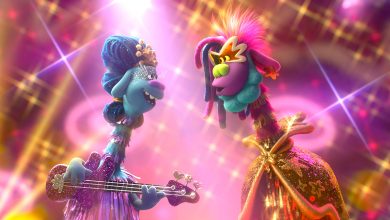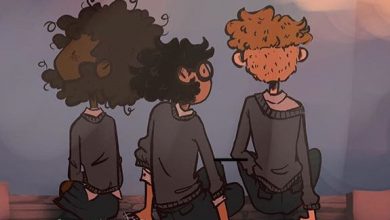
Explaining evolution to young children is tough. Maybe that’s why creationists seem to have cornered the market on books for preschoolers tackling how we got here. But, J.R. Becker’s new book Annabelle & Aiden: The Story of Life takes on the difficult task of making Darwinian evolution interesting, understandable and engaging for young learners.
Published this year with the help of a Kickstarter campaign, Annabelle & Aiden: The Story of Life is a lesson in Darwinian evolution told in verse with beautiful illustrations and interesting information tucked into the art and text. According to Amazon, the intended audience is ages four and up, but it was a hit with my three-year-olds.

Two children wonder how they came to be, and a nearby owl launches into a child-friendly explanation of evolution. The text is well-suited for young kids, and although the book technically has a plot and characters, they are minimalist and science is clearly the focus.
The use of rhyme makes the book easy and fun to read, and makes a complex concept simple while retaining the fascination and joy of it. For example, mutation is explained in a simple age-appropriate way:
With slight random changes,
few were helpful, most, not.
Tiny mouths or teeny fins
or eyes as small as dots.Those with helpful changes
could make babies of their own
a lot more than the others
who were more and more alone.
The book anticipates kids’ natural questions, and begins the process of arming them for debates they will face with those who disbelieve evolution. The question “But how do we know?” is answered with a myriad of ways our bodies show evidence of evolutionary change.
The concepts are big, and far beyond anything my preschoolers can fully understand. But, I don’t think that’s quite the point of this book. It seems geared toward bringing the same delight and lyrical verse to science that is everywhere in the realm of fiction.
For my child who loves the sound of words, the poetry in this book has been a delightful way to pique his interest in scientific terms. His sibling, who cares only for things astronomical, hardly noticed the book’s smooth transition from outer space to earth’s early years, and remained interested throughout.

Then there’s the artwork. From sweeping expanses of space, to a single fetus, Max Rambaldi’s illustrations are beautiful and lively. Each page includes interesting facts written in small text seamlessly integrated into the art.
Some of the artwork includes figurative illustrations that were confusing for my three-year-olds, but that’s to be expected when the intended audience is older. But, figurative or literal, all of the illustrations are gorgeous, detailed and endlessly fascinating. Each time we read this book, someone notices something new.
It is a lovely science-minded book, and has drawn criticism from creationism advocates, who bemoan how Becker “proselytizes evolution” and lump him into the category of authors who target “young children in their campaign to spread Darwinian mantra.” They say this with absolutely zero sense of irony (children’s bible, anyone?).
The book dismisses creationism from the outset. In the first pages, Aiden says “Finding those answers will take far too much work. Just say it was magic,” and is immediately corrected by the wise owl, who explains that “we live to discover” and “the answer you seek is quite magical itself.”
 This marriage of scientific discovery and magical wonder is one of the strengths of Annabelle & Aiden: The Story of Life because it makes science wondrous and exciting.
This marriage of scientific discovery and magical wonder is one of the strengths of Annabelle & Aiden: The Story of Life because it makes science wondrous and exciting.
For toddlers and preschoolers, it has fun illustrations and answers some of their questions about the world around them with the same poetic structure as picture books. For older children, the book introduces the overarching concepts of Darwinian evolution with facts hidden throughout the illustrations to engage and re-engage them.
The way the book balances this complex concept, appeals to multi-age audiences and revels in the joy of science has earned it a permanent spot on our bookshelf, and makes it a great gift for science minded families.
Some suggestions for reading with very young children
- Read it in chunks. While the book works as a long narrative, it also does nicely as single stanzas or pages that are friendlier to toddler attention spans.
- Allow for tangents. Instead of reading it straight through, pause for discussion and exploration when the child’s attention is caught by an idea, word, or image.
- Take time to enjoy the illustrations with your child. Encourage them to “read” the pictures, and talk about what they see.
- Hunt for words and numbers in the pictures. The slips of facts tucked into the illustrations are fun places for pre-readers to search for letters they know and even piece together words.
Annabelle & Aiden: The Story of Life can be found on Facebook, and at Amazon. The author also has a Kickstarter campaign planned for October to fund a children’s book on critical thinking.





Very inspirational book.looking forward to read more.